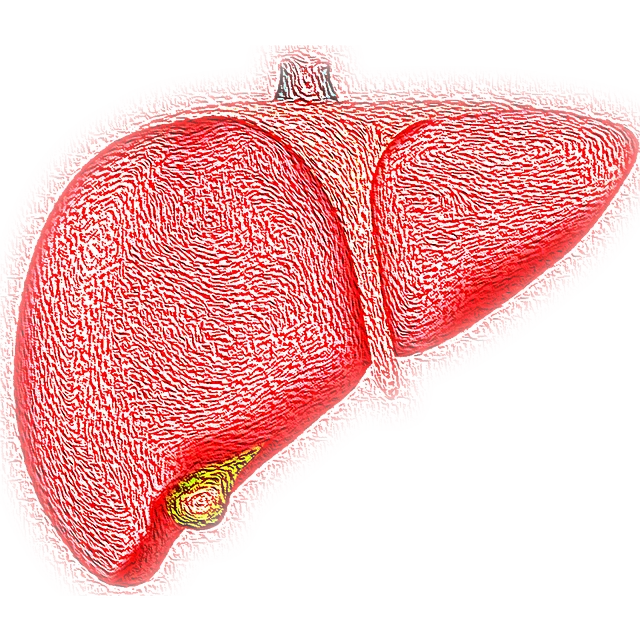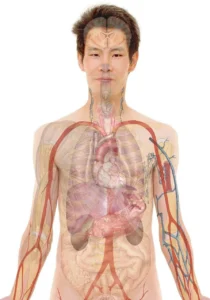What are the Symptoms of Fatty Liver: Understanding the Warning Signs
Fatty liver, also known as hepatic steatosis, is a condition characterized by the accumulation of fat in the liver cells. It is a prevalent condition that can lead to serious health complications if left untreated. Recognizing the symptoms of fatty liver is crucial for early diagnosis and prompt medical intervention. In this article, we will explore the various symptoms associated with fatty liver and discuss their significance in identifying this condition.
 What is Fatty Liver?
What is Fatty Liver?
Fatty liver occurs when excessive fat accumulates in the liver cells. This condition can be categorized into two types: alcoholic fatty liver disease (AFLD) and non-alcoholic fatty liver disease (NAFLD). AFLD is typically associated with excessive alcohol consumption, while NAFLD is more commonly linked to metabolic factors such as obesity, diabetes, and high cholesterol.
You may also like..Start Your Weight Loss Journey 20 Tips for Weight Loss
Causes of Fatty Liver
Fatty liver, also known as hepatic steatosis, occurs when there is an abnormal buildup of fat in the liver cells. There are several factors that can contribute to the development of fatty liver. Here are some common causes:
- Obesity: Obesity is a major risk factor for fatty liver disease. Excess body weight, particularly around the abdomen, increases the likelihood of fat accumulation in the liver.
- Poor diet: Consuming a diet high in calories, especially from unhealthy sources such as sugary beverages, processed foods, and saturated fats, can lead to fatty liver. Diets lacking in fruits, vegetables, and whole grains can also contribute to the condition.
- Insulin resistance: Insulin resistance, a condition in which the body’s cells become less responsive to insulin, can result in an increased production of glucose by the liver. This can lead to excess fat accumulation in the liver.
- Type 2 diabetes: People with type 2 diabetes have a higher risk of developing fatty liver disease. The condition is often associated with insulin resistance and obesity, both of which are common in individuals with diabetes.
- Alcohol consumption: Excessive alcohol consumption is a leading cause of fatty liver disease. The liver prioritizes alcohol metabolism over fat metabolism, leading to fat accumulation in the liver cells.
- Medications: Certain medications, and some antiviral medications, can cause fatty liver as a side effect.
- Rapid weight loss: Losing weight too quickly, especially through crash diets or rapid weight loss programs, can result in the accumulation of fat in the liver.
- Genetics: Genetic factors can play a role in the development of fatty liver disease. Some individuals may be more predisposed to accumulating fat in the liver.
- Metabolic disorders: Metabolic disorders, such as high cholesterol, high triglycerides, and metabolic syndrome, can contribute to the development of fatty liver.
Risk Factors
Several factors increase the risk of developing fatty liver, including:
- Obesity
- Type 2 diabetes
- High blood pressure
- High cholesterol and triglyceride levels
- Metabolic syndrome
- Sedentary lifestyle
- Rapid weight loss
- Certain medications
Common Symptoms of Fatty Liver
Recognizing the symptoms of fatty liver is important for early detection. Here are some common symptoms of fatty liver condition:
1.Fatigue and Weakness
Feeling constantly tired and experiencing a lack of energy is a common symptoms of fatty liver. The liver plays a crucial role in metabolizing nutrients and producing energy. When the liver is affected by excess fat, it may not function optimally, leading to fatigue and weakness.
2.Abdominal Discomfort
Individuals with fatty liver may experience discomfort or pain in the upper right side of the abdomen. This discomfort can range from a dull ache to a sharp pain and may worsen after eating fatty or greasy foods.
3.Jaundice
Jaundice is a condition characterized by yellowing of the skin and eyes. In some cases of advanced fatty liver disease, the liver may become inflamed, leading to impaired liver function and the buildup of bilirubin, a yellow pigment. This can result in jaundice.
4.Unexplained Weight Loss
Sudden and unexplained weight loss can be symptoms of fatty liver disease. When the liver is affected, it may impair the body’s ability to process and absorb nutrients properly, leading to unintended weight loss.
5.Poor Appetite
A decrease in appetite and a general feeling of fullness even after consuming small amounts of food can be symptoms of fatty liver. The accumulation of fat in the liver can disrupt the normal functioning of the digestive system, causing a loss of appetite.
6.Abdominal Swelling
Fatty liver can lead to abdominal swelling or bloating, known as ascites. When the liver becomes enlarged and inflamed, it can disrupt the normal flow of blood and other bodily fluids, leading to fluid retention in the abdomen.
7.Nausea and Vomiting
Experiencing persistent nausea and episodes of vomiting can be symptoms of fatty liver disease. The accumulation of fat in the liver can cause inflammation and disrupt the normal digestive process, leading to these symptoms.
8.Dark Urine
The presence of dark-colored urine can indicate liver dysfunction. In fatty liver disease, the liver may not effectively filter waste products from the blood, resulting in dark urine.
9.Frequent Bruising
Liver dysfunction caused by fatty liver disease can lead to a decrease in blood clotting factors. This can result in easy bruising or prolonged bleeding even from minor injuries.
10.Mental Confusion
In advanced stages of fatty liver disease, the liver’s impaired function can lead to a buildup of toxins in the bloodstream. This can affect brain function and result in confusion, difficulty concentrating, and memory problems.
11.Spider Angiomas
Spider angiomas are small, dilated blood vessels that appear on the skin’s surface. These may be seen in individuals with liver disease, including fatty liver, due to the altered blood flow and increased pressure in the liver.
12 .Elevated Liver Enzymes
Fatty liver disease can cause an elevation in liver enzymes, such as alanine transaminase (ALT) and aspartate transaminase (AST), which are typically detected through blood tests. Increased levels of these enzymes can indicate liver inflammation and damage.
13. Insulin Resistance and Type 2 Diabetes
Fatty liver is closely associated with insulin resistance, a condition in which the body’s cells become less responsive to the effects of insulin. Insulin resistance can lead to elevated blood sugar levels, increasing the risk of developing type 2 diabetes.
14. Elevated Blood Triglyceride Levels
Fatty liver disease can result in elevated levels of triglycerides, a type of fat found in the blood. High triglyceride levels are often associated with metabolic disorders and can increase the risk of heart disease.
15. Sleep Apnea
There is a link between fatty liver disease and sleep apnea, a sleep disorder characterized by interrupted breathing during sleep. Individuals with fatty liver are more prone to developing sleep apnea, and vice versa.
Diagnosing Fatty Liver
To diagnose fatty liver, healthcare professionals may perform various tests, including blood tests, imaging studies (such as ultrasound, CT scan, or MRI), and in some cases, a liver biopsy. These tests help determine the presence and severity of fatty liver disease.
Treatment and Prevention
The treatment and prevention of fatty liver involve lifestyle modifications and addressing underlying health conditions. Some recommended strategies include:
- Adopting a healthy diet low in saturated fats and sugars
- Engaging in regular exercise to maintain a healthy weight
- Avoiding excessive alcohol consumption
- Managing underlying medical conditions, such as diabetes and high cholesterol
- Taking medications as prescribed, if necessary
Prevention strategies for fatty liver include maintaining a healthy weight, exercising regularly, consuming a balanced diet, avoiding excessive alcohol intake, and getting regular check-ups to monitor liver health.
Conclusion
Fatty liver is a condition characterized by the accumulation of fat in the liver cells. It can have various symptoms, ranging from fatigue and abdominal discomfort to jaundice and unexplained weight loss. Early detection and intervention are crucial for managing fatty liver and preventing further complications. By adopting a healthy lifestyle and seeking medical advice, individuals can take proactive steps towards maintaining a healthy liver.
Disclaimer: The information provided in this article is for educational and informational purposes only. It is not intended as medical advice and should not be used as a substitute for professional medical diagnosis or treatment. Always consult with a qualified healthcare provider regarding any medical condition or treatment.
FAQs
Is fatty liver reversible?
Yes, in many cases, fatty liver is reversible with lifestyle changes. By adopting a healthy diet, exercising regularly, and managing underlying conditions, individuals can improve liver health and reduce fat accumulation.
Can fatty liver be prevented?
Fatty liver can be prevented by maintaining a healthy weight, following a balanced diet, limiting alcohol consumption, and getting regular check-ups to monitor liver health.
What dietary changes can help manage fatty liver?
A diet low in saturated fats, sugars, and processed foods is beneficial for managing fatty liver. Focus on consuming fruits, vegetables, lean proteins, whole grains, and healthy fats.




